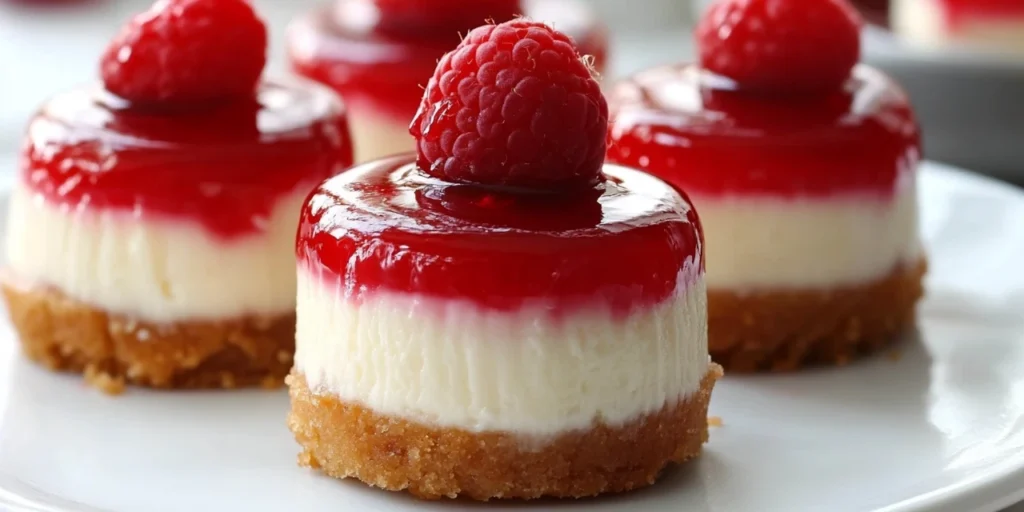Mini cheesecakes are a popular choice for desserts due to their small, manageable portions and creamy texture. However, achieving the perfect mini cheesecake can be tricky, with sinking often being a common issue. In this guide, we’ll explore the reasons behind sinking, the key techniques to prevent it, and answer some frequently asked questions to ensure your mini cheesecakes turn out perfectly every time.
Why Do Mini Cheesecakes Sink?

Mini cheesecakes often sink for several reasons. Knowing these causes is the first step toward perfecting your baking:
- Temperature and Baking Time: Incorrect baking temperatures or times can lead to sinking. Mini cheesecakes require precise control, as overheating can cause the structure to weaken.
- Over-mixing: When too much air is incorporated into the batter, mini cheesecakes puff up during baking and collapse afterward.
- Moisture Imbalance: Cheesecakes are sensitive to moisture; too much can make the structure unstable, causing them to sink as they cool.
For more insights on checking if your cheesecakes are ready, see this guide on how to tell when mini cheesecakes are done to avoid common baking issues.
Essential Preparations to Prevent Sinking
Before you start, take these important steps to minimize the risk of sinking:
- Use Quality Ingredients at Room Temperature: Ingredients at room temperature blend more smoothly, resulting in a stable batter.
- Select the Right Pans and Liners: Using mini cheesecake or muffin tins with liners supports structure and makes it easier to remove them from the pan.
- Preheat Your Oven Properly: Consistent oven temperature is essential for mini cheesecakes. Preheat your oven thoroughly and use an oven thermometer if possible.
For a perfect recipe, try this easy mini cheesecakes recipe with topping ideas to get inspired.
Techniques to Prevent Mini Cheesecakes from Sinking

Mixing Techniques
Proper mixing is essential for achieving perfect mini cheesecakes. Here are a few important techniques:
- Avoid Over-Whipping: Introducing too much air into the batter will cause it to expand during baking and sink when cooling.
- Folding the Ingredients: Fold the batter gently to avoid creating air pockets that could lead to sinking.
Baking Temperature and Timing
Temperature and timing play a critical role in ensuring a stable structure:
- Use a Water Bath: Baking mini cheesecakes in a water bath ensures even moisture distribution, which prevents both sinking and cracking.
- Optimal Baking Temperature: Bake mini cheesecakes at 300°F–325°F for 15–20 minutes. Keep the oven door closed to prevent sudden temperature changes that could cause sinking.
Cooling Gradually
How you cool the mini cheesecakes after baking can also impact their stability:
- Slow Cooling: Turn off the oven and leave the door slightly open for a few minutes to let the cheesecakes cool gradually.
- Refrigeration: Chill the mini cheesecakes for a few hours in the fridge after they’ve cooled to set them fully.
Advanced Tips for Perfect Mini Cheesecakes
Once you’ve mastered the basics, here are some additional tips for better results:
- Use Stabilizers: Adding a small amount of sour cream or flour can help create a firmer structure, making the cheesecakes less prone to sinking.
- Prevent Cracking: Cracks can lead to uneven sinking. Using a water bath helps maintain the texture and stability needed to keep mini cheesecakes intact. For tips on preventing cracks, see how to prevent mini cheesecakes from cracking.
Troubleshooting Common Sinking Issues
If your mini cheesecakes still sink, here are some troubleshooting tips:
- Uneven Texture: Over-mixing the batter often results in a dense, uneven texture. Aim for a gentle, consistent mixing technique.
- Sinking After Baking: This typically occurs due to temperature fluctuations. Avoid opening the oven door during baking, and allow them to cool slowly.
- Center vs. Edge Sinking: If the center sinks more than the edges, this could indicate an uneven bake. Ensuring an even spread in each mold will help.
FAQs

What causes mini cheesecakes to crack?
Cracks are often due to over-mixing, baking at improper temperatures, or sudden cooling. Using a water bath and mixing gently can help prevent this issue.
Can I use different types of pans?
Yes, but using a mini cheesecake pan or muffin tin with liners provides the best support and structure for mini cheesecakes.
Why does my cheesecake collapse after baking?
Mini cheesecakes tend to collapse due to over-mixing or temperature changes. Gradual cooling and careful mixing are key to avoiding this issue.
Final Thoughts
Baking mini cheesecakes that hold their shape can be challenging, but with the right techniques and a bit of practice, it’s achievable. Follow these steps and use the tips above to create stable, delicious mini cheesecakes without the sinking issue. For more mini cheesecake recipes, explore delicious mini cheesecake recipes for more inspiration and tips.

